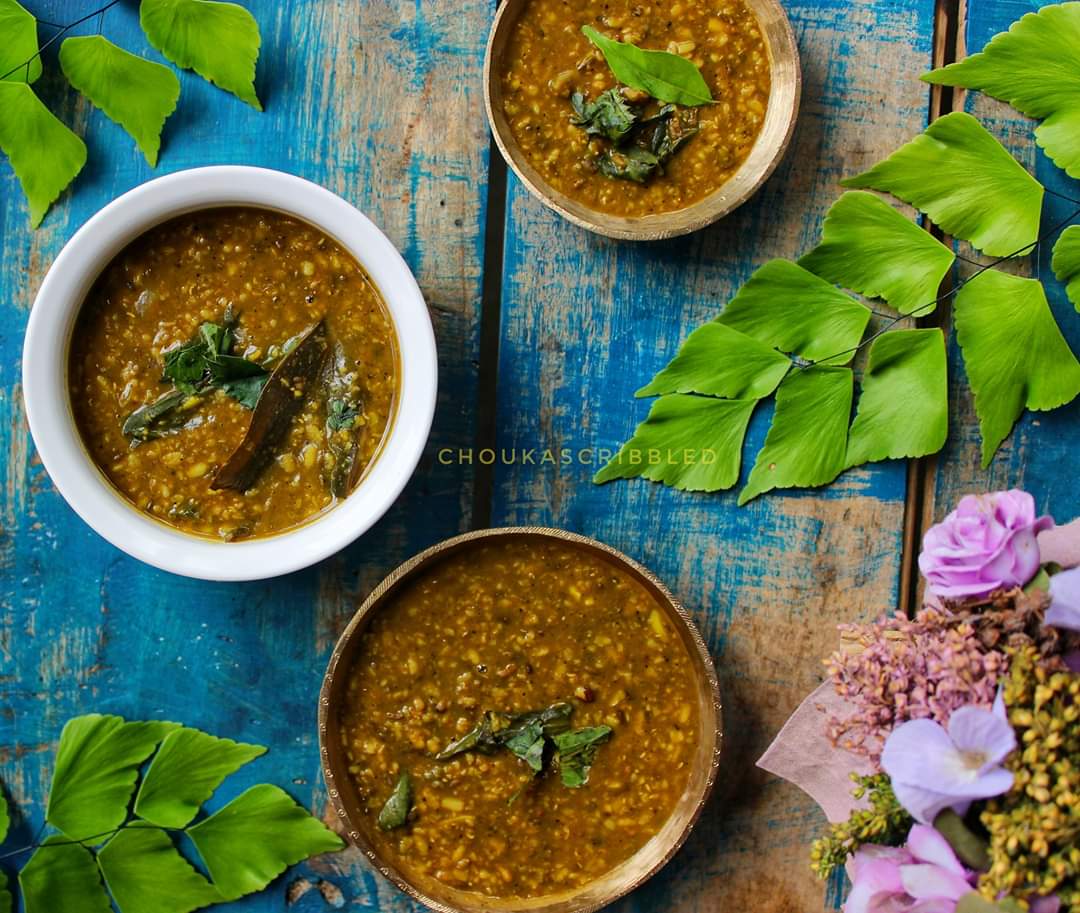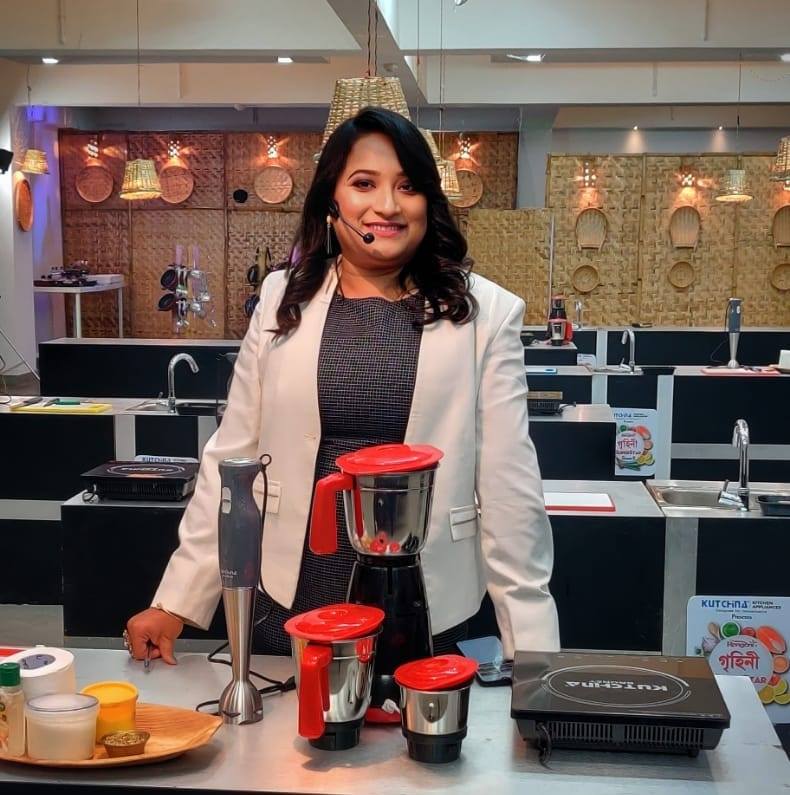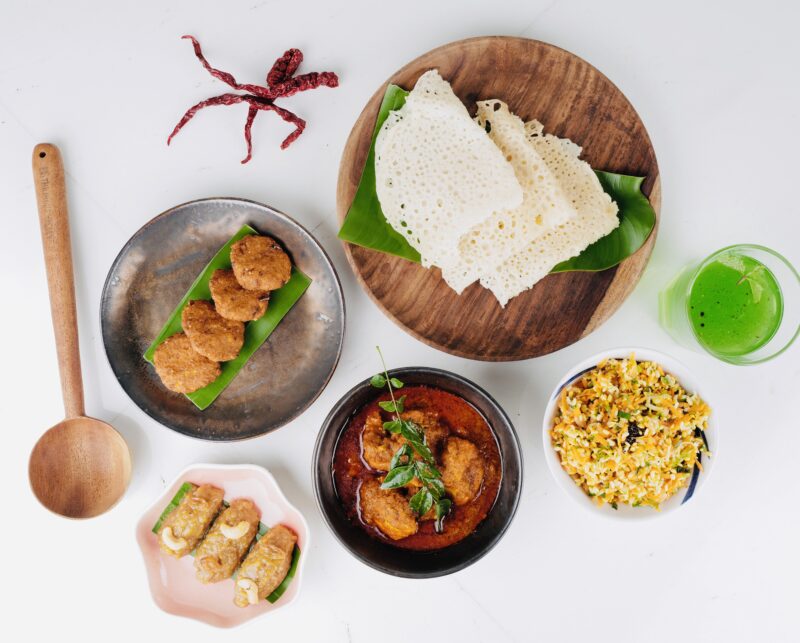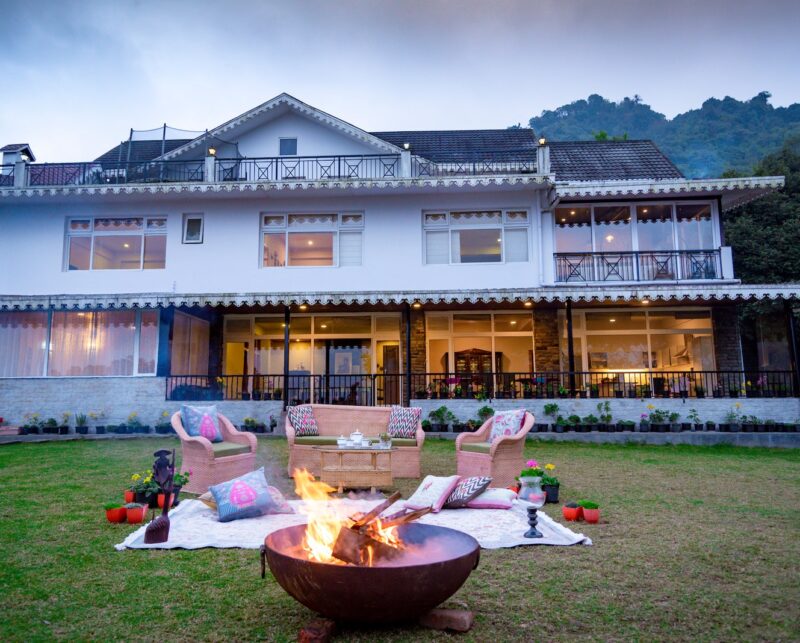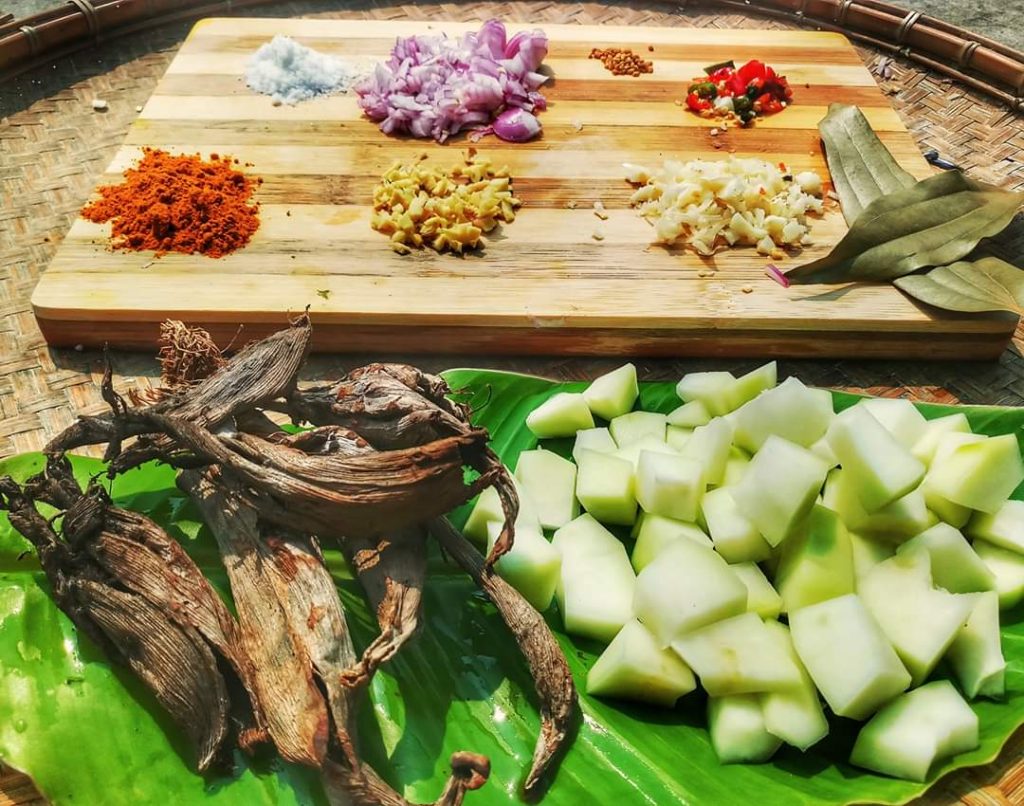
Khar is a distinctive Assamese preparation that gets its unique astringent flavour from an indigenous alkaline product. Typically, analkaline extract is produced by charring the sundried peel of humped
feather back bananas, (locally called as ‘Bhim Kol’ ) and sometimes even its root. The charred peel ( close to ashes ) are dipped in water and filtered extract is known as Khar.
While there are quite a few variations of a Khar dish, mostly based on the ingredients that it is added to ( some popular dishes are made using raw green papaya, various types of gourds, lentils, greens or fish head ), the most popular one that is an inevitable part of a traditional Assamese thali is the ‘Omitar Khar’ or ‘Raw Green Papaya
The Khar dish is so important to the Assamese people that ‘Khar Khuwa Axomiya’ (Khar Eating Assamese) is a phrase used to describe an Assamese who lives by and embodies all the traits and traditions that defines Assamese community.
Use of khar may date back to those times when salt was an expensive commodity in Assam and not affordable for many. Even when salt has become a common commodity and so the soda is no longer required as a substitute, the dry and light khar still is an integral part of Assamese cuisine both for its medicinal values and it smoky earthy
flavours. A typical Assamese meal comprises a variety of flavours – astringent, sour, salty, bitter, sweet, pungent etc. Khar is often had at the beginning of the meal to clear the system.
Here are two recipes using Khar, one with Green Papaya and the other with Black lentils.
1. Green Papaya Khar
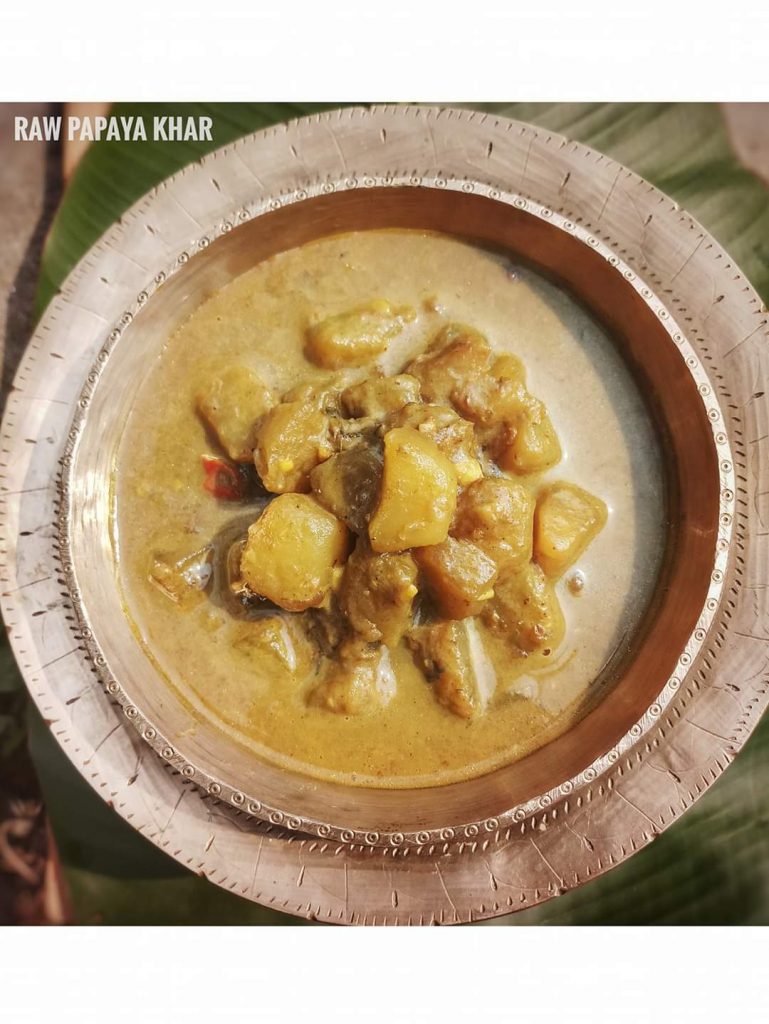
Ingredients
1 tspn fenugreek
1 tblspn chopped garlic
1/2 tblspn chopped ginger
1 large onion sliced
2 bay leaves
1/2 tspn turmeric
2-3 chillies
Salt as per taste
1 tablespoon of mustard oil
350 gms cubed raw green papaya
• Sift bay leaves and fenugreek seeds to a vessel containing heated
oil, and cook till they crackle.
• Saute the slices of onions till they are translucent and then add
the paste of chopped ginger and garlic. Let the mixture cook till
done.
• Add in the papaya cubes to the spice mixture, and stir well till the
spices blend into the papaya.
• Sprinkle salt and an optional pinch of turmeric, and add the
chillies. Stir and cover for 2-3 minutes.
• Add in 3/4th cup of Khar and 2 cups of warm water and simmer till
the papayas has softened up.
• When the papaya stew attains a thick consistency turn the flame off.
• Serve hot with steamed rice.
Matimahor khar
(Black Dal with Khar)
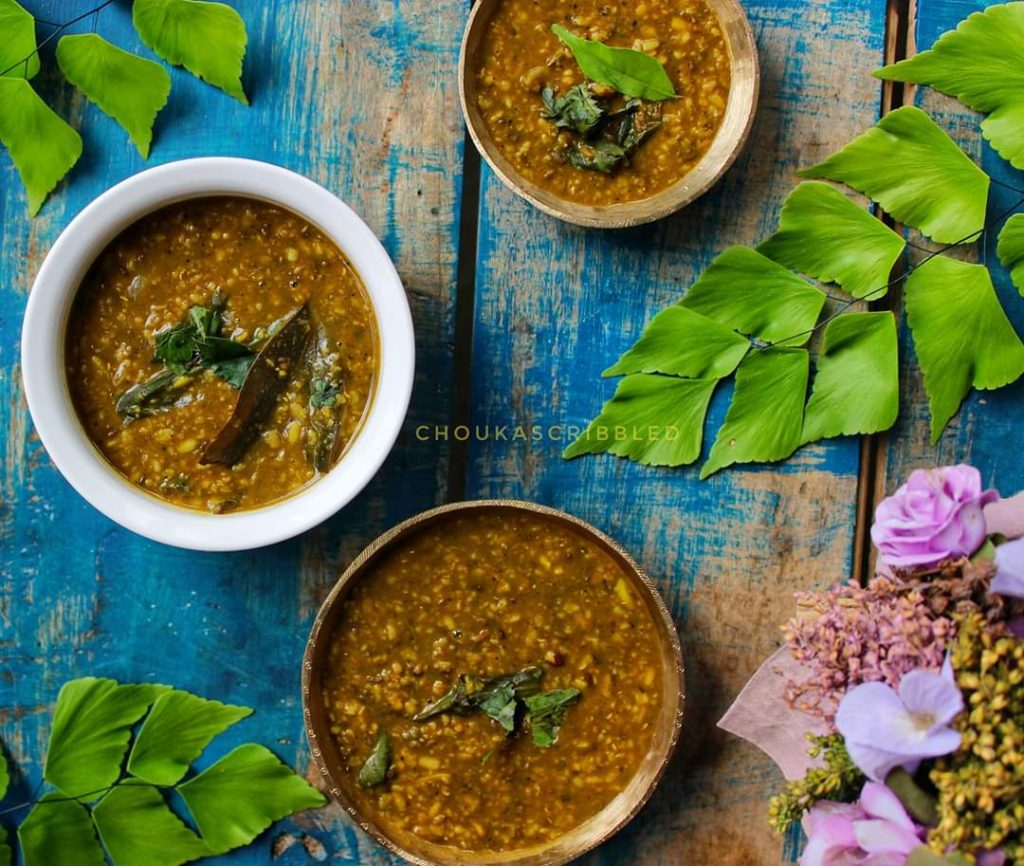
Dal/ pulses (mostly lentils) is a quintessential part of an Indian meal. The fact that there are so many variations of it across our country, for e.g. the simple Plain dal, Dal fry, Dal Shorba, Dal ghost, Dal Murighonto, Dal palak, Sambar, Rasam, Maa ki dal, Dal Makhni etc to name a few, largely speaks for its huge popularity.
Each of these recipes vary from one another not only in the kind of the star ingredients used, but also in the type of lentil used; just for the simple reason that not every lentil can bring the best out of a particular ingredient.
Talking about lentils and star ingredients complementing one another, there is one particular dal recipe widely popular across Assam. It may resemble ‘maa ki dal’ (to some extent to dal makhni too) in appearance, but its flavours are very distinct and unique owing to the use of ‘Khar’ and the cooking technique used in its preparation.
Unlike many other urad dal recipes, there’s absolutely no use of cream, butter or ghee in it.
Ingredients
250 gm. split black lentils (urad dal)
1 medium sized bulb of garlic crushed
1 inch ginger thinnly sliced
2 green chillies
2 bay leaves
1 tbsp. of mustard oil
1 tsp. paanch phuron
1 cup of kol khar
1/2 tsp of black pepper
Salt to taste
½ cup water
Coriander for garnish.
Method
*Wash and soak black (urad)dal for 2 to 3 hrs or overnight.
Strain and keep aside.
• Make a mix of 1 tbsp of mustard oi and 2 tbsp of kol khaar and keep aside.
• Pressure cook the dal with 1 teaspoon salt and half a cup of khar
for 2 whistles or until the lentils are tender but not overcooked.
The khar added here helps in tenderizing the lentils.
• In a heavy pan, heat the mustard oil to smoking point .
• Temper the oil with paanch phuron, bay leaves, garlic and chillies.
• Sauté for a while, till the raw fragnance of the garlic disappears.
• Pour in the boiled dal and mix well.
• Fry the dal for a minute and add water to adjust the consistency if required.
• Add ginger slices and cook for another 3 to 5 mins.
• Add the mustard oil and khar mixture to the stew (this is optional
but adding khar and mustard oil just elevates the flavour to another
level).
• Stir well.
• Garnish with coriander (I prefer to use saw tooth coriander added
while adding the sliced ginger).


